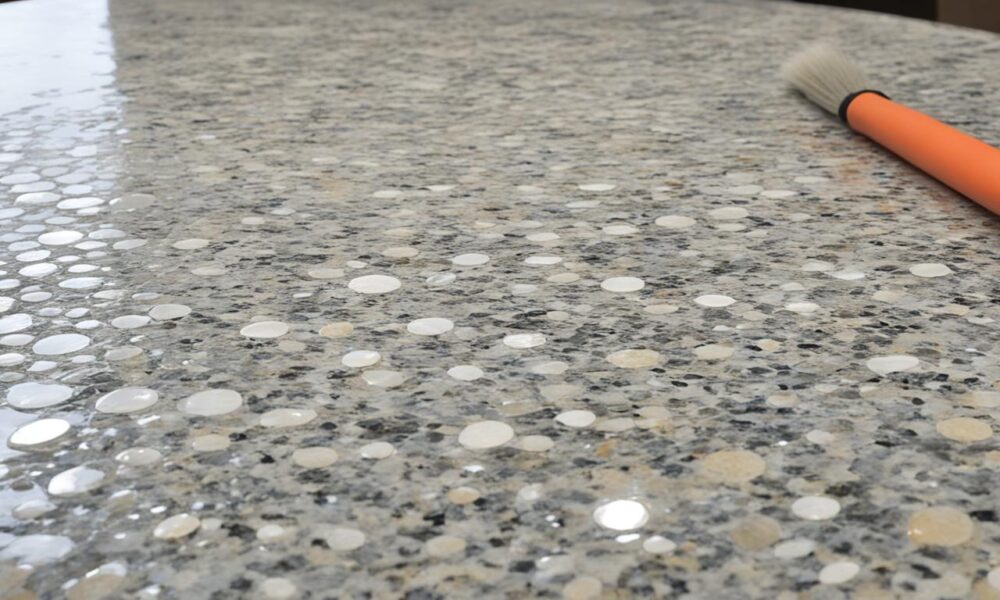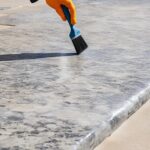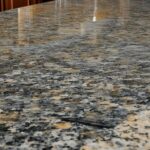Natural Stone Care: Keep Your Stone Looking New
Natural stone surfaces like granite, marble, and limestone make any home or office look elegant and valuable. But, they need the right care to stay looking great. With regular cleaning, polishing, and sealing, your stone surfaces can stay beautiful for many years.
Natural Stone Care is a top choice for stone maintenance. They work with contractors, designers, and homeowners. Their team can handle any project, giving you a high-gloss finish. They use products like MORE® Premium Stone Sealer and MORE® Stone & Tile Cleaner for the best stain protection and daily cleaning.
Keeping stone looking good means knowing how to care for each type. For quartz, use mild, non-abrasive cleaners like MORE® products. Sealers protect against oil and water stains, and enhancers highlight the stone’s natural beauty.
Key Takeaways
- Regular cleaning, polishing, and sealing keep natural stone looking great.
- Use cleaners made for stone, avoiding harsh chemicals.
- Seal marble, granite, and limestone to protect against stains.
- Choose the right cleaners and sealers for your stone type.
- For deep cleaning and stain removal, hire professional stone restoration services.
Understanding Natural Stone Surfaces
Natural stone is a timeless and elegant choice for both homes and businesses. It brings sophistication and classic beauty. To keep natural stone looking great, it’s key to know how to care for it. Learning about each stone’s unique traits helps keep your surfaces looking new for many years.
Types of Natural Stone
Natural stone is divided into two main groups: calcareous and siliceous stones. Calcareous stones include marble, limestone, travertine, onyx, and serpentine. They are made mostly of calcium carbonate. These stones are beautiful but can be damaged by acids and need sealing to prevent stains and etching.
Siliceous stones, like sandstone, slate, quartzite, soapstone, and granite, are made of silicates. They are tougher and resist acids better than calcareous stones. This makes them great for busy areas and outside use.
Characteristics of Each Stone Type
Each natural stone has its own special traits that make it beautiful and strong. Here’s a quick look at some popular stones:
- Marble: Known for its timeless beauty, marble is a calcareous stone. It needs sealing to protect against stains and etching.
- Granite: This siliceous stone is very durable and resists scratches and stains well. It should be sealed, but it’s not as porous as other stones.
- Limestone: Being a calcareous stone, limestone can be damaged by acids and water. It’s important to seal it and clean up spills quickly to keep it looking good.
- Travertine: This calcareous stone has unique patterns and a porous surface. Sealing it is necessary to prevent stains and damage.
- Soapstone: A siliceous stone with a smooth, soft feel, soapstone doesn’t stain or react to chemicals easily. It might need oiling now and then to keep its look.
When picking natural stone for your place, think about each stone’s properties and how they’ll work in your space. Using stones with different traits can cause problems with wear, upkeep, and re-polishing, especially outside.
“White or very lightly colored marbles and onyxes may have translucence, an aesthetically intriguing attribute where the crystal structure transmits light to varying degrees depending on stone thickness and finish.”
Knowing the special traits of each stone helps you make smart choices for care and upkeep. Regular cleaning, sealing, and getting professional help can keep your natural stone looking great for a long time.
Importance of Proper Stone Care
Natural stone surfaces like granite, marble, and limestone add beauty and durability to any space. But, they need the right care to stay beautiful and last long. With the right care, your natural stone can look great for many years.
Choosing the right cleaners is key to protecting your stone. The wrong cleaners can dull or damage the stone. Weiman Granite & Stone Daily Clean & Shine with Disinfectant is a great choice for daily cleaning. It kills germs like E. Coli and Staph, making your space safer.
Cleaning and disinfecting your granite and stone countertops often is important. It helps get rid of germs and bacteria that can make people sick. This keeps your family healthy.
Quickly cleaning up spills is important, especially on light-colored marble and limestone. Acting fast helps prevent stains. Sealing your stone is also key to protect it from stains. Using the right sealer, like MORE® Premium Stone Sealer, helps keep your stone looking great.
The Weiman Granite & Stone Sealer forms flexible, molecular links in each pore of granite/stone, protecting the surface from watermarks and preventing stains from being absorbed, showcasing the effectiveness of the product in maintaining the quality of stone surfaces.
How often you need to seal your stone depends on the stone type and how much it’s used. Testing the seal by sprinkling water on it can tell you if it needs resealing. This helps keep your stone well-protected.
For cleaning quartz surfaces, use mild, non-abrasive cleaners. MORE® has cleaners for both heavy-duty cleaning and daily use. Their products are better for the air quality in your home, with up to 90% less VOC emissions.
In summary, taking good care of your stone is key to keeping it beautiful and valuable. Follow expert advice, use the right cleaners, seal regularly, and clean up spills fast. This way, your natural stone will stay a beautiful part of your space for a long time.
Routine Stone Cleaning
Keeping your natural stone surfaces looking great requires regular cleaning and care. By sticking to a cleaning routine and using the right products, your stone will stay beautiful for many years.
Choosing the Right Cleaners
It’s important to pick cleaners for your natural stone that are pH-neutral and made for stone. Stay away from cleaners with acids or bleach, as they can damage your stone. Look for cleaners that clean well without harming the stone.
Here are some cleaners for different stains:
- Organic stains: 12% hydrogen peroxide with a few drops of ammonia
- Oil-based stains: Household detergent, mineral spirits, or acetone
- Biological stains: Diluted cleaning solution with ½ cup of ammonia, bleach, or hydrogen peroxide per gallon of water
- Paint stains: Lacquer thinner or “heavy liquid” paint stripper containing caustic soda or lye
For tough oil and grease stains, try a poultice stain remover. It’s a clay that pulls stains out of the stone’s pores.
Cleaning Techniques for Different Stone Types
While cleaning most stones is similar, some need special techniques because of their texture. Here’s a basic cleaning method for most stones:
- Apply the cleaning solution to the stone with a sponge or spray bottle.
- Let the solution sit as the manufacturer suggests.
- Scrub the surface with a sponge or soft brush to get rid of dirt.
- Wipe away the dirty solution with a clean sponge, then rinse with water.
- Dry the surface with a soft cloth or towel.
Textured stones might need special cleaning methods or tools to clean all the nooks and crannies. Always check the manufacturer’s instructions for your stone type and finish.
Remember to dry your stone well after cleaning to avoid water spots or stains.
Using the right pH-neutral cleaners and cleaning methods for your stone type will help keep your natural stone looking great for years.
Deep Cleaning and Stain Removal
Regular cleaning keeps natural stone surfaces looking great. But sometimes, deep cleaning is needed to get rid of tough stains and grime. Heavy-duty stone cleaners are perfect for these deep cleans.
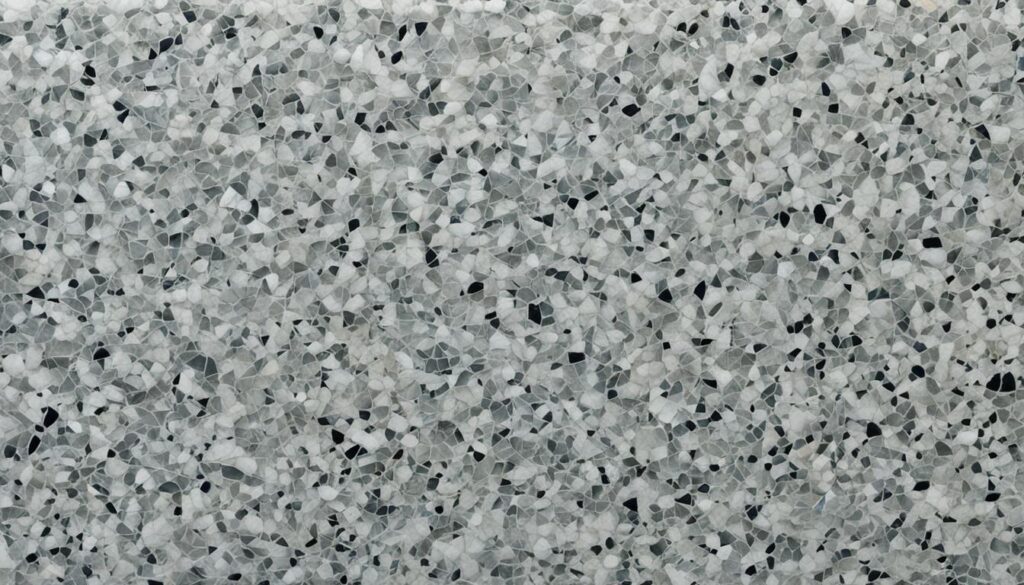
Heavy-Duty Stone Cleaners
For a deep clean, use a heavy-duty stone cleaner and degreaser. These products remove dirt, grease, and grime without harming the stone. Always follow the instructions carefully when using these cleaners.
- Apply the cleaning solution per the instructions
- Allow it to stand for the specified amount of time
- Agitate the surface with a sponge or soft bristle brush
- Remove the dirty solution with a clean sponge
- Buff the surface dry with a soft cloth
Using Poultice for Stain Removal
For tough stains, a stone poultice might be the solution. A poultice is a fine, non-acidic powder that absorbs stains and grout haze from natural stone. It works on both polished and unpolished surfaces.
The effectiveness of a poultice varies with the stain type and age. If the stain is old or deep, a poultice might not fully remove it.
When using a poultice for stain removal, consider these factors:
- The type of stain (organic, metal, ink, etc.)
- The depth of the stain’s penetration
- The age of the stain
- The type of stone affected
| Stain Type | Removal Method |
|---|---|
| Organic | May disappear after the source is removed |
| Metal | Must be removed with a poultice |
| Ink | Can be cleaned with bleach or hydrogen peroxide |
| Water spots and rings | Can be buffed with dry 0000 steel wool |
Using the right cleaners and techniques can deeply clean your natural stone surfaces. This removes even the toughest stains. For the best results, consider hiring a professional stone cleaning service. They have the expertise and tools to make your stone look new again.
Sealing Natural Stone
Sealing natural stone surfaces is key to keeping them looking great and lasting long. A sealer shields your stone from stains, etching, and daily wear. It’s a must for all natural stones, especially marble, granite, and limestone, to keep stains away.
Benefits of Sealing Stone
Sealing your natural stone has many perks:
- It stops stains from getting into the stone.
- It makes the stone’s color pop.
- It protects against etching from acidic things.
- It makes cleaning easier.
Seal your stone every few years, as the maker says, to keep it looking good and safe.
Types of Stone Sealers
There are many stone sealers out there, each with its own benefits:
- Penetrating/impregnating sealers: These go into the stone, giving a natural look. They come in water-based or solvent-based types and work for inside and outside use.
- Stone enhancer sealers: Like impregnating sealers, these enhance the stone’s color and beauty. They make old and weathered stone look new again.
- Topical sealers: These create a protective layer on the stone’s surface. They’re easy to apply and can be less expensive. But, some can change the stone’s color.
“Omni-Sealers offers many sealants for different needs, so you can find the right one for your stone.”
How Often to Seal Stone
How often you seal your stone depends on the stone type, its porosity, and how much it’s used. Generally, seal every 1-3 years. Use the water drop test to see if your stone needs resealing:
- If the stone gets darker or absorbs water in under 4 minutes, it’s time to reseal.
Clean the stone well before sealing to get an even coat. For very porous stones, you might need more sealer for full protection.
| Stone Type | Recommended Sealer Types |
|---|---|
| Marble | Impregnators, acid-resistant sealers, food-safe sealers |
| Granite | Impregnators, food-safe sealers, fluorocarbon aliphatic resins (avoid linseed, silicon, and siloxane resin types) |
Sealing your natural stone right lets you enjoy its beauty and strength for many years.
Polishing Stone Surfaces
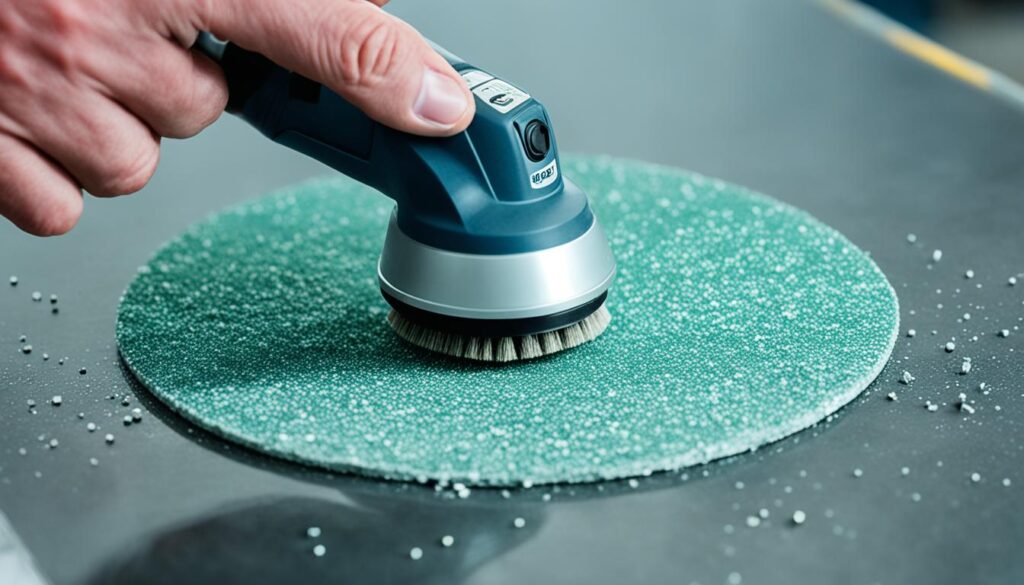
Natural stones like granite, marble, and travertine shine when polished by pros. This process brings back their original shine and protects them from water spots and fingerprints. It’s a great way to make old floors and countertops look new again.
Polishing granite is a great way to show off its beauty. It makes the stone shine, protects it, and stops it from getting dull. Experts use special techniques to make your granite surfaces look amazing.
“Stone polishing is an art form that requires skill, experience, and the right tools. When done correctly, it can completely transform the look of your natural stone surfaces, making them look brand new again.” – Emily Thompson, Professional Stone Restoration Specialist
Trying to polish stone yourself can be risky. Professionals use the right polish and machines to get a high gloss without harm. They know how to work with different stones for the best look.
| Stone Type | Polishing Frequency | Benefits |
|---|---|---|
| Granite | Every 1-2 years | Enhances natural color, prevents dulling and streaks |
| Marble | Every 1-3 years | Restores shine, removes etching and light scratches |
| Travertine | Every 2-4 years | Fills in holes, creates smooth and glossy surface |
| Limestone | Every 3-5 years | Strengthens stone, enhances natural color and pattern |
Polishing isn’t just for old stones. It can also make new ones look better. By choosing professional polishing, your stones will stay beautiful and last longer. This adds value and style to your place.
Preventing Damage to Natural Stone
Natural stone is both durable and beautiful for countertops, floors, and more. Yet, it’s not invincible. Knowing what damages it and how to prevent it is key. With the right care, you can dodge expensive stone repair costs and enjoy your stone for many years.
Common Causes of Stone Damage
Acidic substances are a big threat to natural stone. Even simple things like vinegar or citrus can dull stones like marble, travertine, and limestone. Wine, coffee, fruit juices, and many cleaners can also cause harm.
Scratches are another big problem, especially for softer stones like marble. Granite is harder and less prone to scratches but can still get damaged by hard materials. Chips often happen when heavy objects hit the stone.
Fast temperature changes can also hurt your stone, especially quartz countertops. Quartz can handle high heat but sudden cold can cause cracks.
Tips for Avoiding Damage
To stop acid etching, always use coasters under drinks and clean spills right away. Don’t use harsh or abrasive cleaners on your stone. Instead, go for cleaners made for stone that are pH-neutral.
Keep your stone safe from scratches by using cutting boards, trivets, and placemats. Don’t drag heavy things across the stone, and be careful not to drop hard objects on the edges.
To avoid heat damage, use trivets or hot pads under hot dishes and appliances. Don’t put hot items directly on quartz countertops to prevent cracking.
Sealing your stone often can stop stains and etching. Most stones need sealing, except soapstone, with a good water-based sealer. Lighter stones might need sealing more often than darker ones.
| Stone Type | Recommended Sealing Frequency |
|---|---|
| Granite | Every 1-2 years |
| Marble | Every 6-12 months |
| Travertine | Every 6-12 months |
| Limestone | Every 6-12 months |
| Soapstone | No sealing needed; oil or wax for enhanced color |
By following these tips and knowing your stone’s unique traits, you can avoid common damage. This way, your stone will stay beautiful for many years.
Professional Stone Restoration Services
When your natural stone surfaces get damaged or lose their shine, it’s time for experts. Professional stone restoration companies offer many services like cleaning, polishing, and sealing. They have the skills and tools to fix your stone and make it look new again.
The restoration process changes the stone’s surface to get the look you want, whether shiny or matte. This needs a skilled technician with lots of experience. These companies are careful not to damage nearby surfaces while working.
They don’t just polish and hone. They can fix cracks, chips, and tough stains too. Using special techniques, they remove stains without harming the stone. After fixing your stone, they apply a sealer to protect it from future stains. With professional help, your stone can look amazing again.

